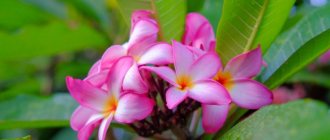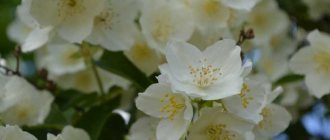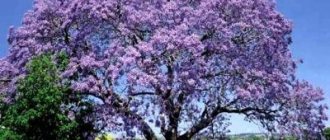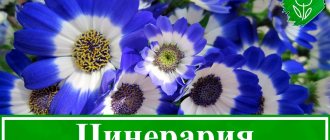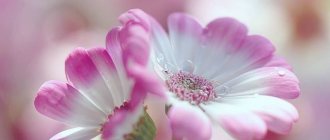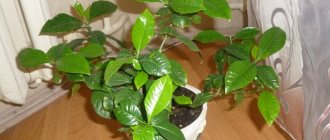Modest, not provocatively bright flower crops are becoming increasingly popular in the design of flower beds and garden plots. Their calm, gentle, peaceful beauty fascinates and makes you look back and stop. This also applies to the Brovallia flower, a herbaceous annual plant from the nightshade family. A neat bush, strewn with small flowers, will decorate a balcony, terrace, or any corner of the garden plot, and will give the interior a cute originality. Browallia can be grown as a garden and indoor plant.
Brovallia care
To extend the flowering period, you need to create the most comfortable conditions for the flower. The most important thing is to adjust the climate, humidity and choose a good place in the apartment.
Lighting
Brovallia loves bright and diffused light. In order for a flower to bloom, it must be provided with 12 hours of daylight throughout the year. If there is not enough sun in winter, additional lighting must be installed.
Attention! In winter, the plant is placed on the south side in order to somehow compensate for the lack of light.
Temperature
Comfortable temperature for the plant in the warm season is +20-25°C. In winter, the temperature is maintained at +15-17°C. If you do not maintain a period of rest, the flower will hurt. Also, lowering the temperature is necessary for future flowering and high decorativeness.
Attention! The air temperature is also lowered to prevent the shoots from stretching. If the climate remains the same as in summer, but the plant does not have enough sun, Browallia will begin to stretch.
Place in the apartment
When installing a plant, you must choose an area without drafts and temperature changes. The plant should be kept away from heating appliances. It is best to place the pot on a window with a southeast or southwest orientation. This way the brovallia will get enough light and won’t burn the leaves.
Watering and humidity
Watering frequency:
- The plant loves abundant watering. The watering standard for brovallia is once every 7 days.
- During the warm season, irrigation may be required every 2-3 days.
- In winter, the intensity of watering is reduced to 1 time per week.
It is important to let the top layer of soil dry out between waterings, otherwise fungal infections may develop and the root system will begin to rot.
Browallia thrives at moderate humidity levels of around 55-60%. On hot days, the above-ground part of the plant is additionally sprayed. Otherwise, spider mites may appear in a dry room. At the same time, it is important not to touch the inflorescences; the petals darken when water gets on them.
Important! Watering and spraying is always carried out with settled water at room temperature.
Feeding
Fertilizers are used only during the active growing season - from spring to early autumn. In winter, fertilizing is not needed.
Supplements can be made every 2 weeks. It is desirable that they include phosphorus and potassium compounds. High concentrations of nitrogen are undesirable. You can use complex mineral supplements.
Pinching and trimming
Pinching is carried out occasionally during the active growing season. The procedure gives the plant lushness and compactness. Young apical shoots and the first buds are pinched, this provokes abundant branching.
Attention! To ensure a longer flowering period, you need to pick off old buds immediately after they bloom. Otherwise, they will begin to form a seed pod, and the energy of the brovallia will be spent on fruit ovary.
Pruning is also carried out in early spring, old, darkened and diseased branches and leaves are removed.
Difficulties
The plant may be affected:
- Powdery mildew.
- Spider mite.
- Scale insects.
- Whitefly.
But, as a rule, with proper care (watering, soil, good place) no difficulties arise, the plant is not a sissy and has good immunity of its own.
We also often get written about yellowing of the leaves - most likely, the room for the brovallia is too hot, spray the plant more often, if it is not possible to move it, this allows you to locally slightly reduce the air temperature, but it is still better to place it in a cooler place.
Landing instructions
Brovallia should be planted in soil made from turf and leaf soil, preferably adding perlite and humus. The pot must allow for the drainage of excess liquid.
Suitable pot for planting Brovallia
Soil and drainage
The composition of the soil can be different, the main thing is that it is nutritious, loose, and neutral in acidity. The easiest option is to purchase universal soil for home flowers and add sand and charcoal to it. They also use soil for Saintpaulias.
You can make your own soil from:
- 2 parts of turf land;
- 2 parts leaf soil;
- 1 part humus;
- 1 part perlite.
Choosing a pot
The pot should have drainage holes from which excess liquid will come out. Otherwise, the plant will develop root rot.
Plastic pots are most often chosen, but clay pots are also suitable. There should be a space of 1.5-2 cm between the walls and the earthen lump. You can use hanging containers, because The stems are quite long and can hang down to the sides.
Transfer schedule
The plant dies after it forms seed pods. You can artificially extend the lifespan by replanting after flowering begins. The procedure is carried out once a year, in early spring.
Replanting is also necessary when the plant has outgrown its pot. If the time for replanting has come, and changing the pot is not required, you can simply replace the top layer of soil with a fresh one.
Step-by-step planting instructions
Transplantation is carried out either before flowering or after. Otherwise, browallia will lose its inflorescences.
Before the transplant procedure, you need to water the flower well:
- A drainage layer is laid on the bottom of the pot, which usually occupies 1/5-1/6 of its height.
- The prepared earthen mixture is laid on top.
- The flower is carefully removed from the old pot and the soil is shaken off the roots. Dried and darkened areas are cut off.
- The plant is centered in the pot and the remaining substrate is added. Then you can shake the container slightly or compact the soil a little to get rid of voids.
- The plant is shed abundantly with water.
Description of Browallia
The roots of the culture go back to the tropical regions of South and Central America, where it grows wild. The bush with branching drooping stems has a compact round shape and in its natural environment grows up to 1 m; the height of cultivated species varies from 20 cm to 35 cm.
Small dark green leaves look like an elongated oval with a narrow tip. Single flowers of white, blue and purple colors, resembling stars, grow from the leaf axils. The petals, of which there are five, are fused at the base, slightly curved and show a light “eye” in the middle of the flower.
Flowering begins in mid-summer and continues until frost, and potted plants delight with an abundance of flowers all year round.
Small seeds ripen in a box with valves, from where they spill out when ripe.
Information! Brovallia is an annual plant, but at home, with proper care, its life cycle can be extended to 2 years. After prolonged flowering, the plant fades and needs to be renewed.
Reproduction
Brovallia propagates in two ways - by seeds or cuttings. Cuttings save time and give better results.
Seeds
- The collected seeds are left in lukewarm water for 24 hours.
- Soil, which consists of sand and peat, is placed in the planting container.
- The ground is sprayed with a spray bottle.
- Seeds are planted in a container with a depth of 2 cm.
- The seeds must be covered with glass or film to create a greenhouse effect. At the same time, they are ventilated daily and regularly moistened.
- When the first shoots appear, the plants are placed in a well-lit place and the film is removed.
By cuttings
- Healthy, already formed apical cuttings are cut from the bush, always with 2-3 leaves.
- The cuttings are placed in water until the root system is formed, the process usually takes about a month.
- Water is replaced once every 3 days.
- When the roots have grown 2 cm, they can be planted in the ground.
Important! Up to 3 cuttings are planted in a pot to make the plant more lush and beautiful.
Brovallia varieties for indoor growing
As a garden crop, several species have become widespread: beautiful, large-flowered, pubescent, sticky, American, but as a plant for home cultivation there is only one species - beautiful browallia.
Varieties of beautiful browallia
| Name | Flower color |
| Silver Bell, White Troll | White |
| Loyalty, Blue Troll | Bright blue with white eye |
| Blue Bell, Jingle Bell | Blue (various shades) |
| Ocean | Blue, white |
| Indigo | Purple blue |
Pests
Unfortunately, pests love the succulent leaves of Browallia. If maintenance standards have been violated, or the plant has been transplanted into contaminated soil, insects quickly form entire colonies.
Shchitovka
The insect reaches about 2 mm in length. Has a durable shell. The pest digs into the pulp of the leaves, tightly adhering to the plate. That is why it is difficult to get rid of scale insects using traditional methods.
You can try rinsing the plant in the shower, brushing off the scale insects with a soft brush, but this method does not prevent re-infestation. The most reliable method is insecticide treatment. Before spraying, the window sill and pot are wiped with disinfectant compounds.
Shchitovka
Then spray :
- Aktaroy;
- Mospiran;
- Bankolom.
Spider mite
The tick is difficult to detect due to its small size; the body reaches 1-2 mm in length. The insect reproduces quickly, the colony hides on the inside of the leaves. Because of the pest, a thin cobweb forms on the brovallia, the foliage becomes dry and lethargic, and the plates begin to turn yellow.
The sick plant is taken to a separate room for quarantine.
Spider mite
Then the processing :
- Actellicom;
- Fitoverm;
- Neoronom.
The pest appears only at low air humidity. Accordingly, with regular watering, spraying and an average level of humidity, there will be no spider mites.
Whitefly
Outwardly it resembles a small white butterfly, the length of the body is 1.3-1.5 mm. When a flower is infected by a colony of pests, when approaching it, a whole cloud of fluttering insects forms around the brovallia. The leaf blade begins to curl inward. The color saturation is lost, the leaves become pale. A sticky coating appears on the surface of the plant. The development of the plant stops.
Important! It will not be possible to get rid of the larvae using folk methods, because... they are protected by a wax cocoon. The best way to cure a flower is to use insecticides.
To cure brovallia, spray:
- Aktaroy;
- Confidor;
- Spark.
If there is a whitefly in the room, other flowers may become infected. It is better to isolate the sick flower in a separate room.
Plant toxicity
Lantana flower: home care and methods of propagation
When deciding to plant brovallia in your apartment, you should not forget for a second that this flower is poisonous. Without exception, all parts of the plant contain a toxic substance that has a negative effect on the human body if ingested or on the mucous membrane.
Even the most experienced gardener can grow brovallia.
This does not mean that you should give up growing a beautiful flower at home. You just need to be extremely careful when interacting with the plant. If there are children or pets in the apartment, the culture pot should be placed in a place where it will not be accessible.
Caring for the plant should be done with rubber gloves and when pruning and replanting, avoid getting juice in the eyes or on unhealed wounds. If, as a result of negligence, a toxic substance does get on the skin, you must immediately rinse the area of the body under running water.
Most often, brovallia is grown in pots rather than in open ground.
By being safe, it is easy to avoid any problems associated with breeding Brovallia and enjoy its incredibly beautiful blooming appearance.
Application
This indoor and garden plant is most often used as a tapeworm. It is great if you need to create a single accent in a room - for example, decorating a kitchen table with a potted plant. It can combine well with other plants that have similar needs, but the use of brovallia in compositions is not very common.
In open ground, brovallia is used in flower beds, as a border plant and, of course, in a variety of containers. Browallia looks unconventional, so she can become a good participant in modernist compositions. Planting in hanging containers is possible; brovallia has sufficiently flexible shoots so that it can act as an hanging crop.
Main types
Brovallia belongs to the Solanaceae family, but, unlike its relatives such as potatoes and tomatoes, it is not used in cooking.
The plant is native to South America.
There are five main varieties in the Brovallia genus:
- Beautiful;
- American (hairy);
- Sticky;
- Blue Bell;
- Silver Bell.
Browallia is a very beautiful flower
Brovallia is beautiful
The height of Browallia, beautiful in the wild, can reach one and a half meters. On the windowsills of apartment buildings, the plant usually grows up to 35 cm. The shrub branches well, does not require pruning to form a beautiful silhouette and blooms very profusely. The flowers have a purple or blue tint.
Browallia grandiflora
Quite a large plant - the height can reach half a meter. The flowers also differ in size and can be white or light blue in color. The highlight of the species is not only the size of the flowers, but also the fact that they are collected in inflorescences.
Browallia grandiflora
Browallia pubescent
A medium-sized bush, no more than 60 cm, pleases with flowers of blue and purple shades all year round. The flower got its name for its increased pubescence compared to other species.
Browallia americana
This indoor annual plant contains small flowers that are predominantly purple, sometimes blue. The leaves are dark green, very expressive in color. Flowering continues from mid-summer until late autumn.
Brovallia sticky
Artificially grown Brovallia sticky is not the most common variety. It received the epithet “sticky” in its name for its stems covered with sticky liquid. The flowers of the plant are small, dark blue or white.
Browallia Blue Bell
Brovalia Blue Bell is characterized by low maintenance. Due to this, the variety is more often grown in apartment conditions than others. The bush has a spherical shape and grows to an average height of 30-35 cm. Already three months after sowing in the soil, the variety begins to bloom with flowers painted in different shades of blue. The variety is hybrid.
Brovallia Silver Bell
Another popular hybrid variety, Browallia Silver Bell, has flowers shaped like a five-pointed star. Their size is 3 cm in diameter, the petals are white. The leaves of the Browallia Silver Bell flower have a rich dark green color. On average they grow up to six cm.
Brovallia Silver Bell looks very festive
This variety is often grown as an annual in flower beds and in flowerpots outside.
Features of flowering
The main and special quality of brovallia is its long flowering. Throughout its short period of life, it blooms continuously.
Blooming home decoration
The flowers of the plant can have various shades of blue or have a snow-white color. Some are inflorescences, and many varieties are covered with a scattering of small flowers.
Attention! Another feature is the lack of need for a rest period. In winter, flowering may decline slightly, but it does not stop.
Watering and humidity
In the summer, brovallia needs abundant watering , and in winter - very moderate . It is extremely dangerous to be too zealous with watering - excess moisture leads to rotting of the roots.
Brovallia will not refuse high air humidity, but can adapt to normal room conditions. The plant will be very grateful if you spray it regularly.
We answer the question: how to plant basil at home so that there is greenery on the table all year round?
Caring for the beautiful fuchsia rewards you with lush flowering. Read more here.
Bright gloxinia will charm you with its colors https://sad-doma.net/houseplants/dekarativnotsvetushhie/gloksiniya/gloksiniya-uhod.html, if you follow the rules for caring for it.
Common Mistakes
In the case when brovallia is grown from seeds to decorate a balcony or loggia, it is necessary to remove the seedlings to a permanent place only when the threat of the first spring frosts has disappeared. Otherwise the plant will die.
Regularly, after the final transplantation of brovallia into pots, it is necessary to begin fertilizing with fertilizer for flowering indoor plants every 10-14 days until the end of flowering.
